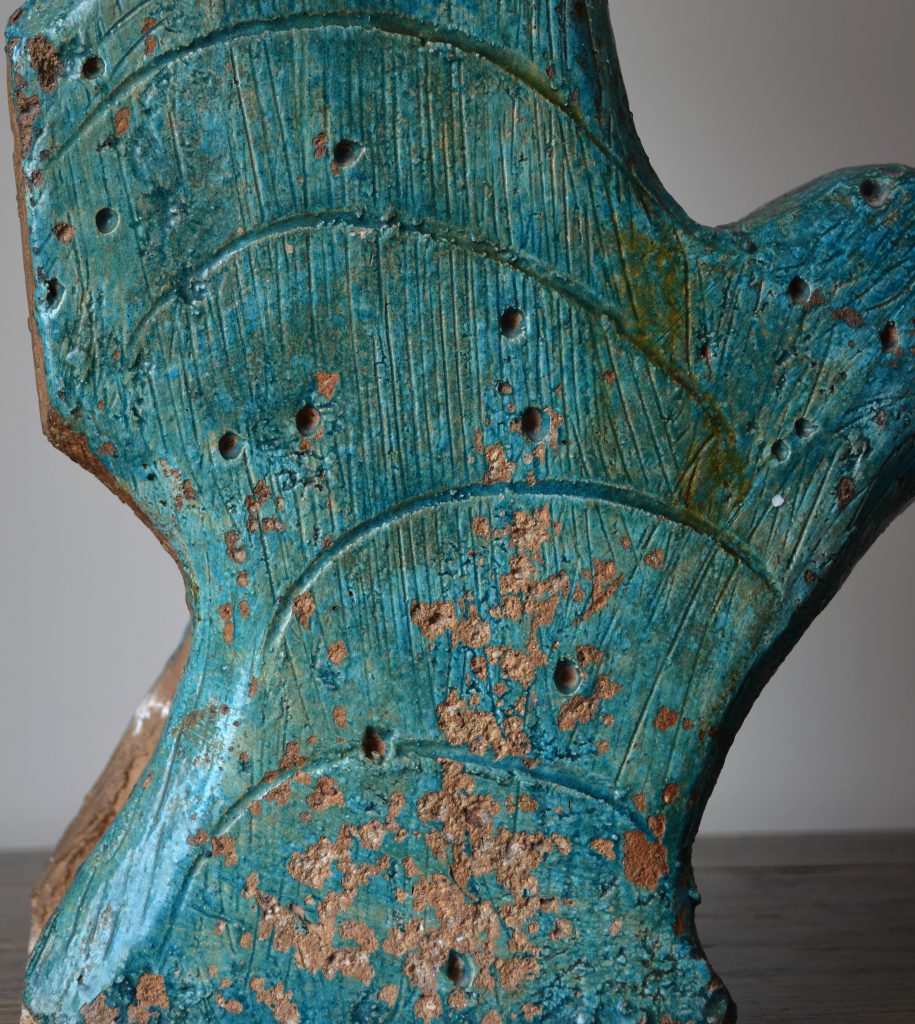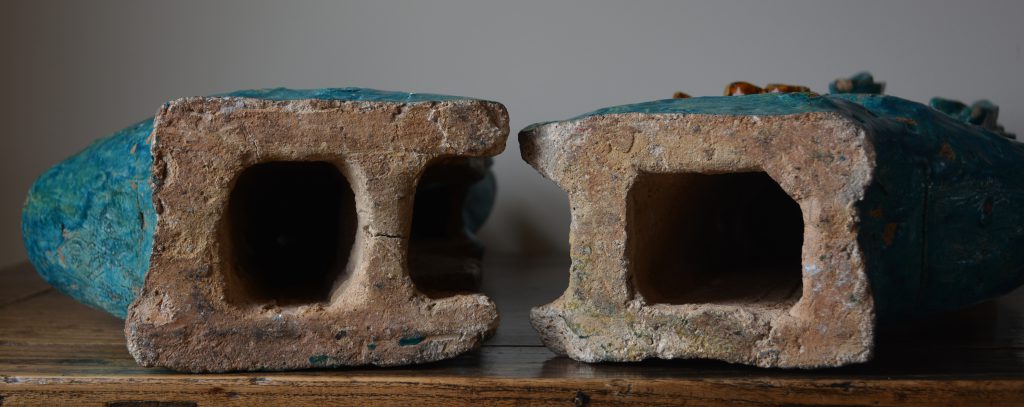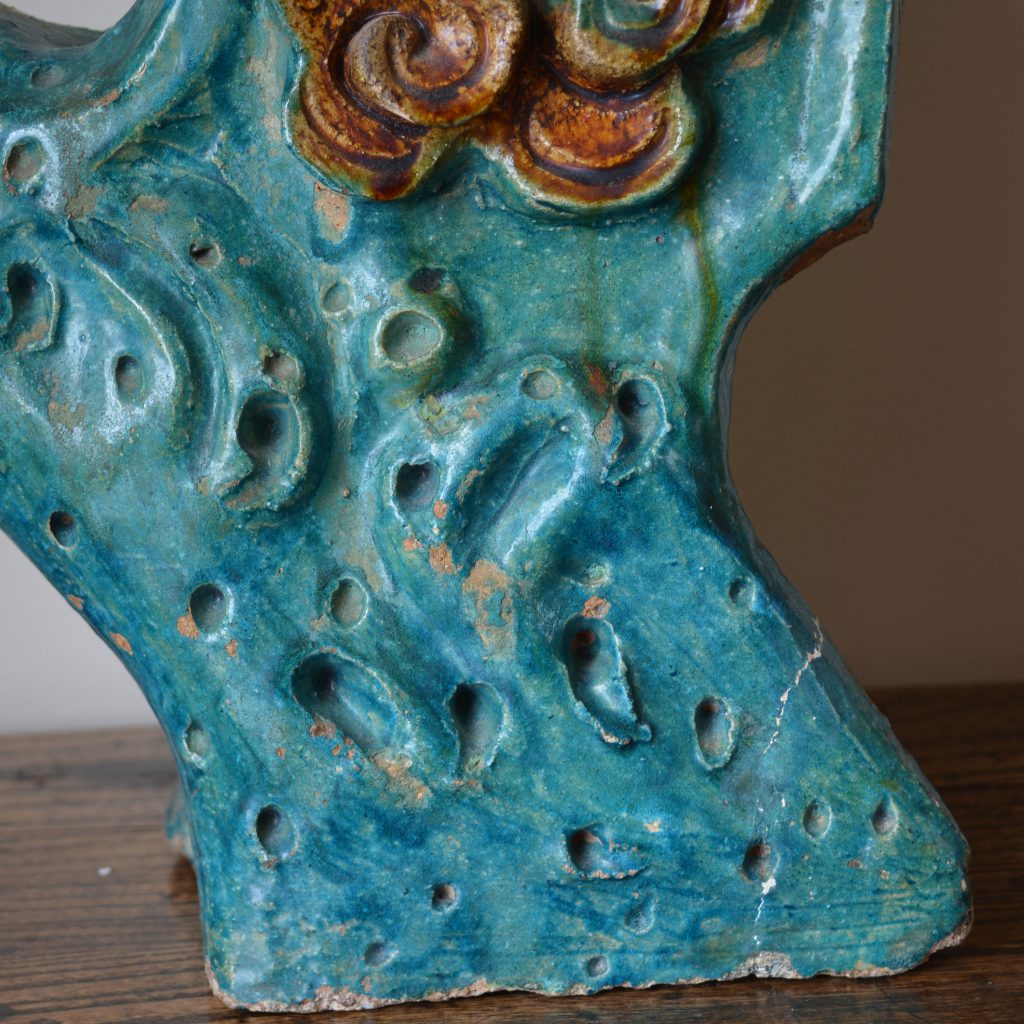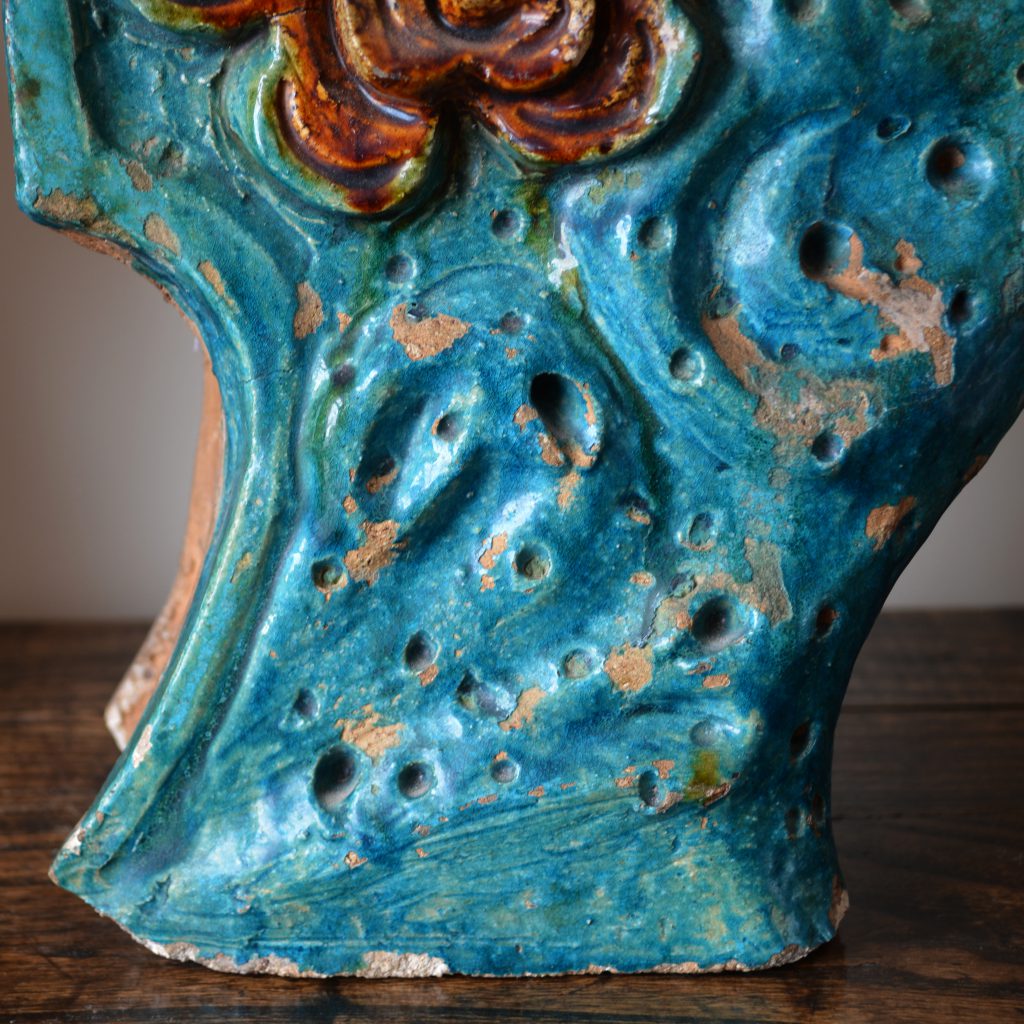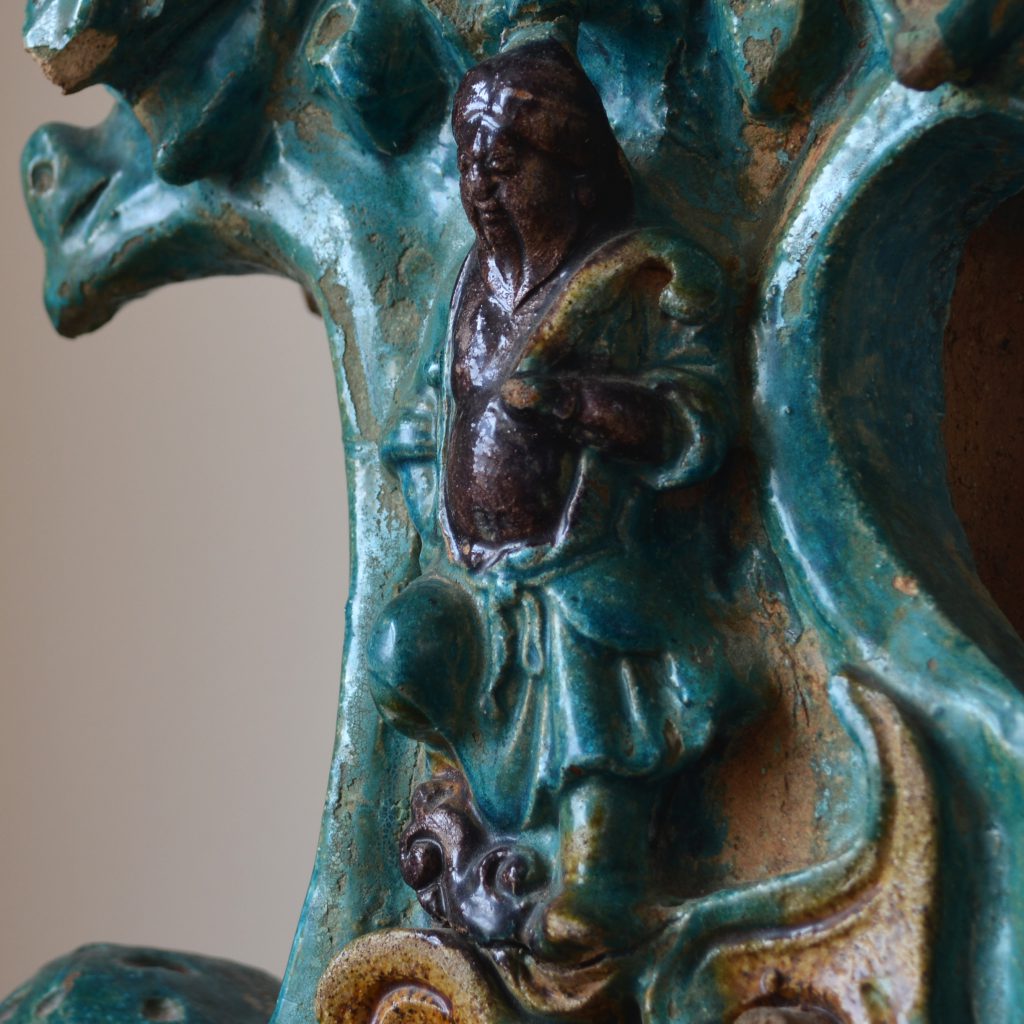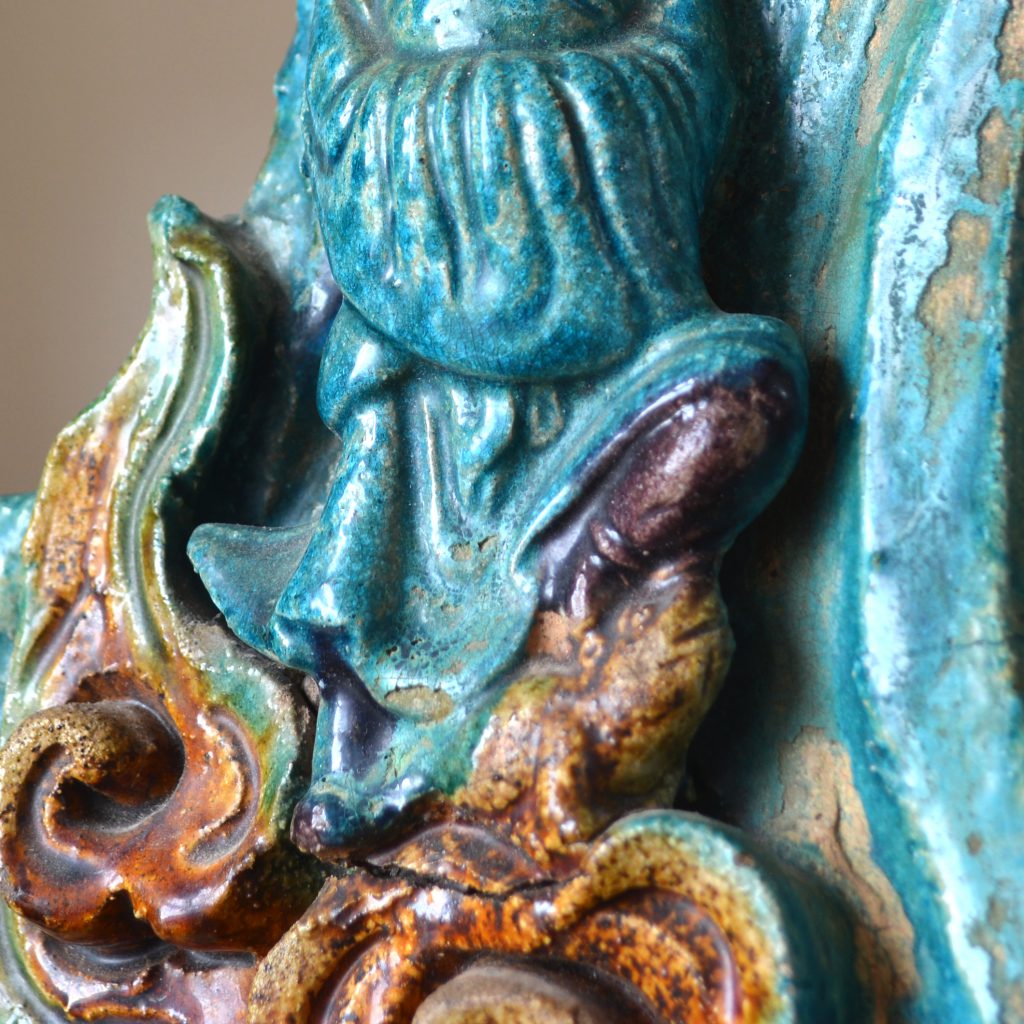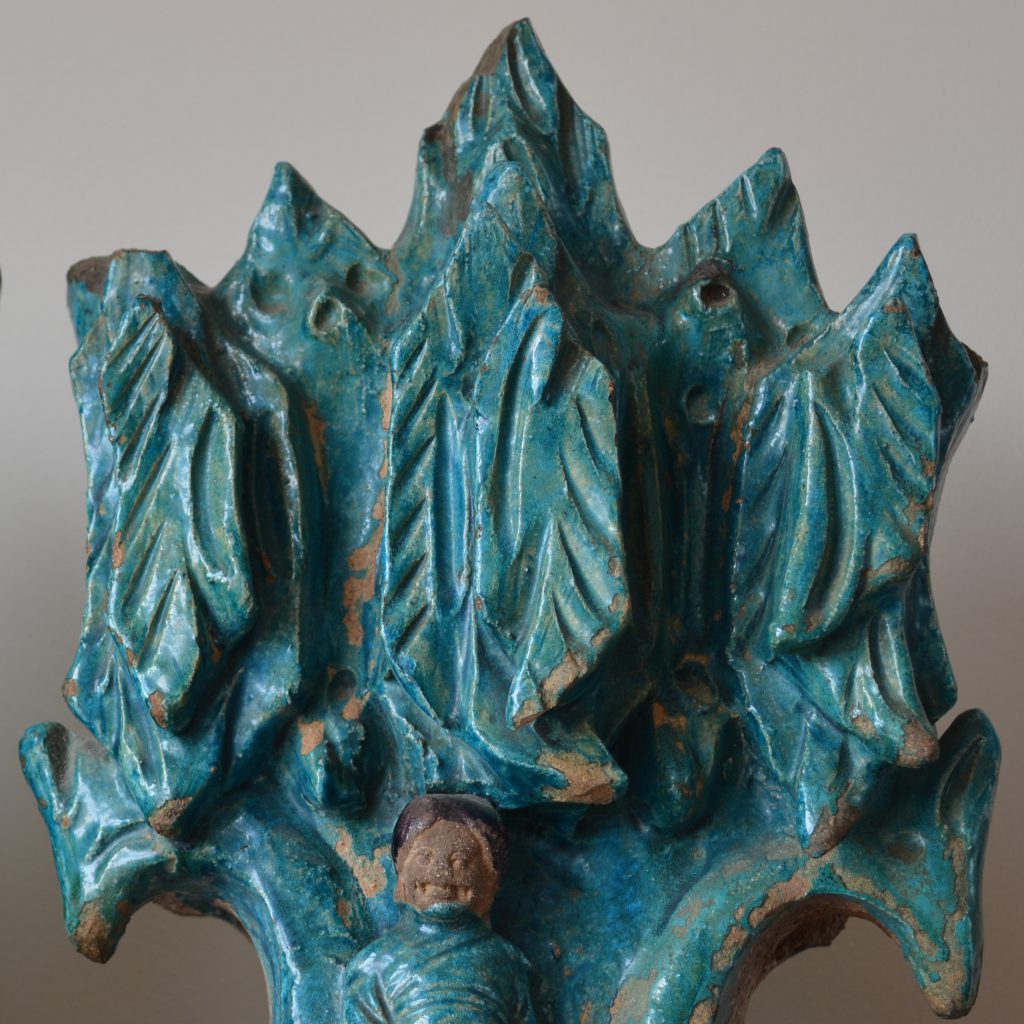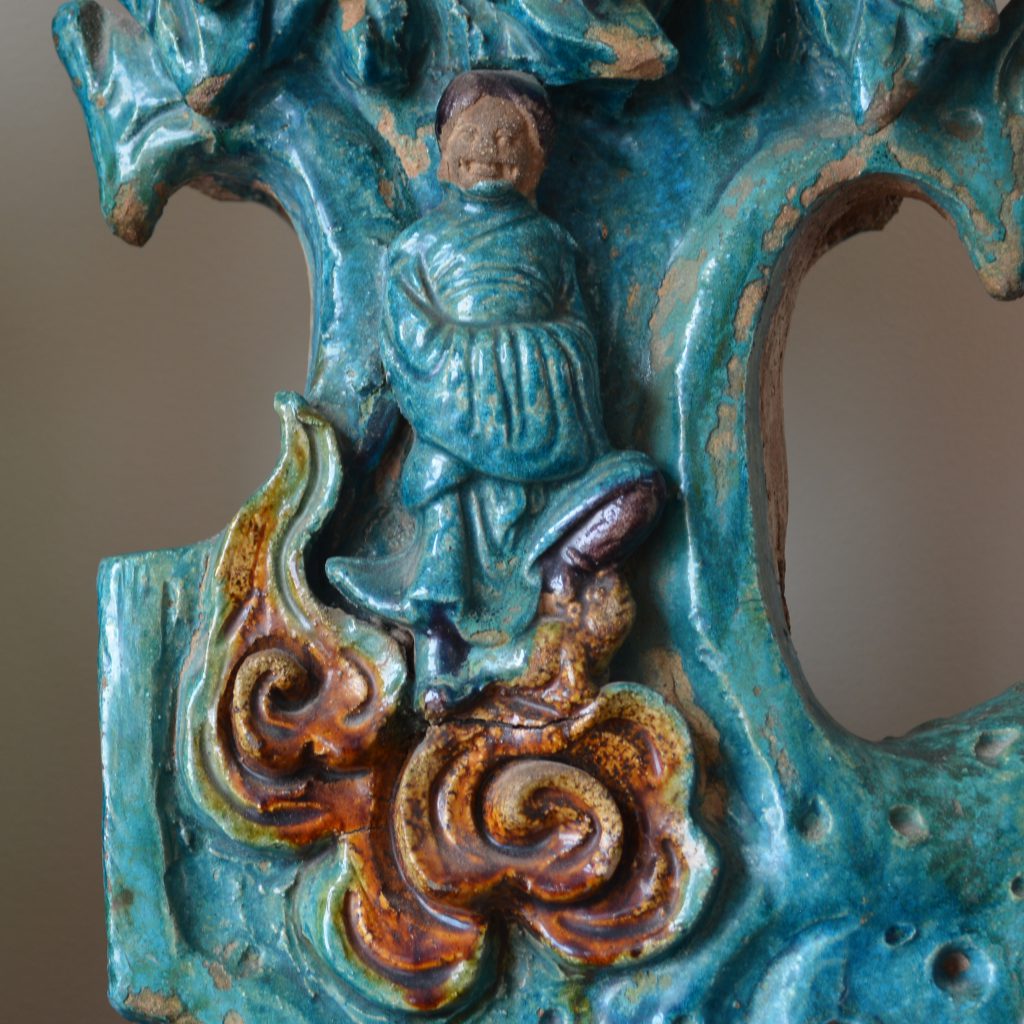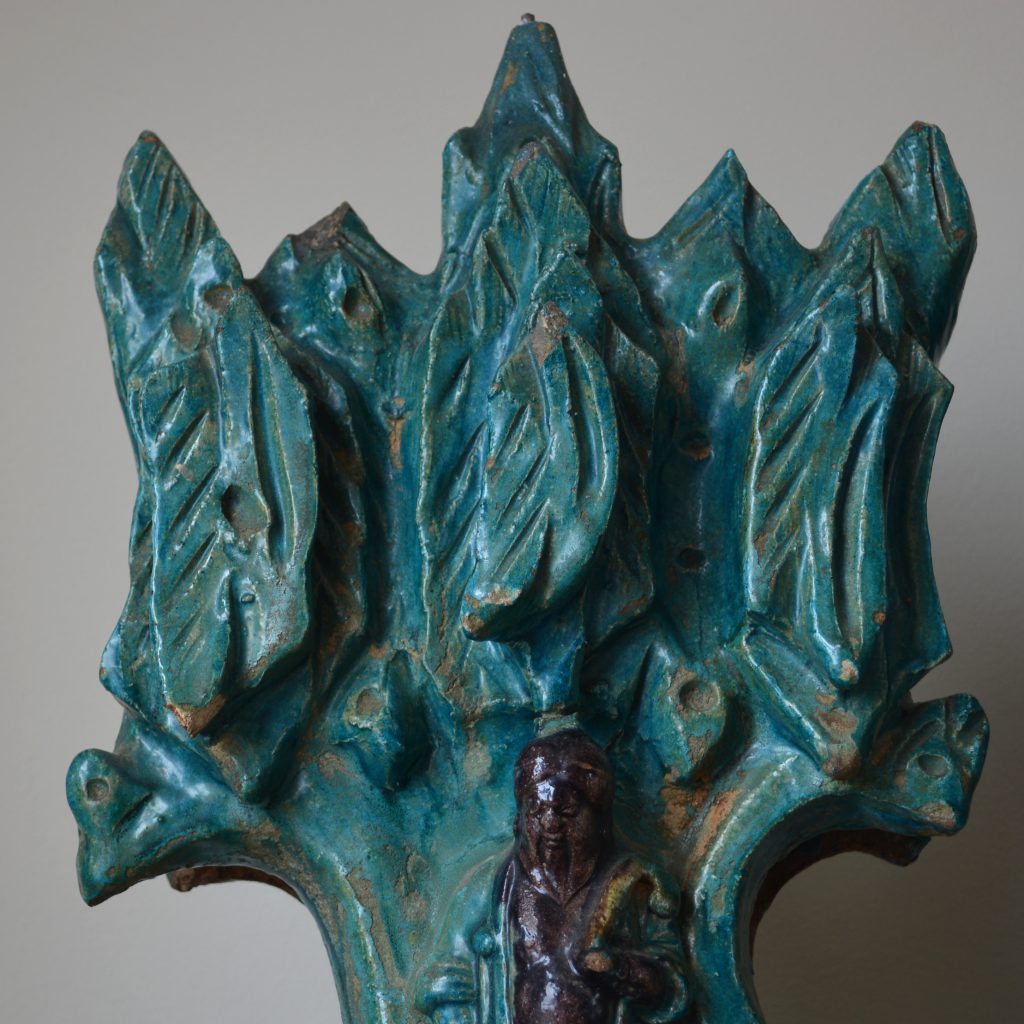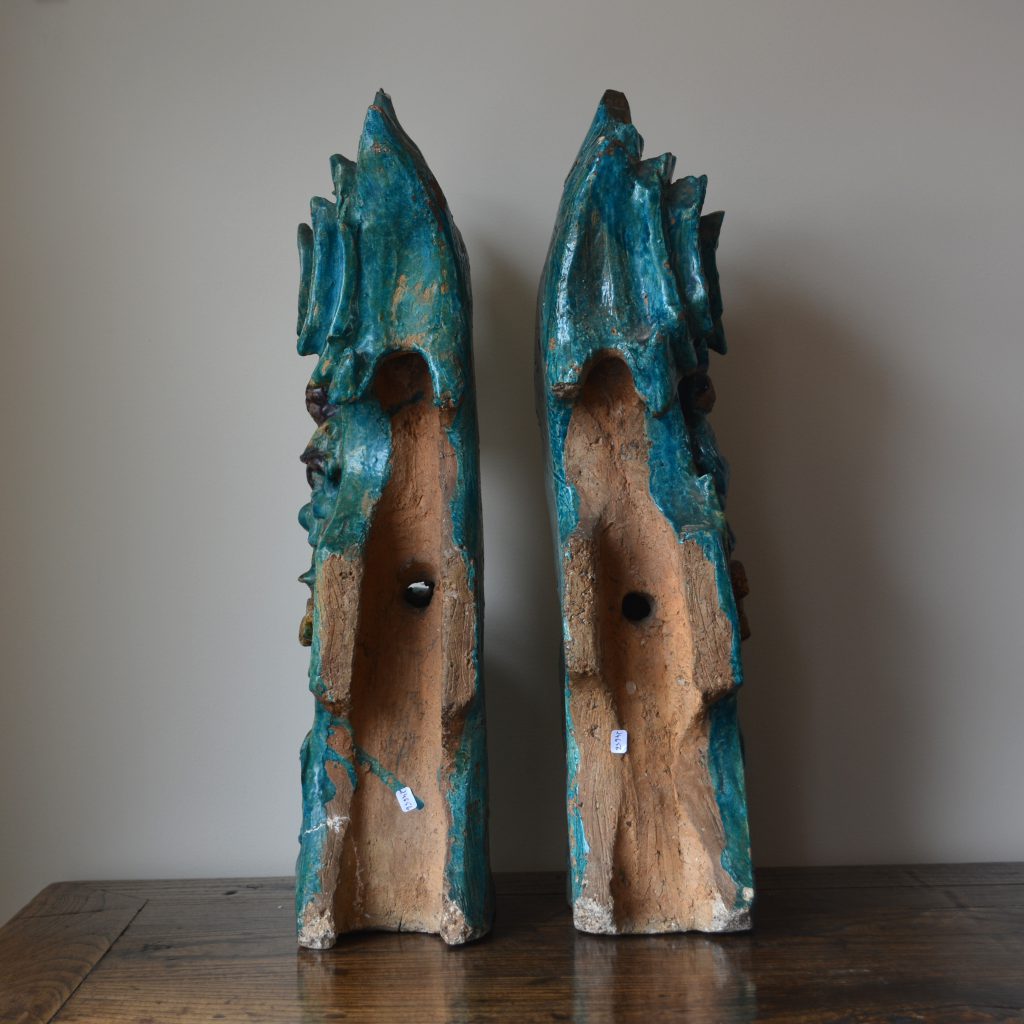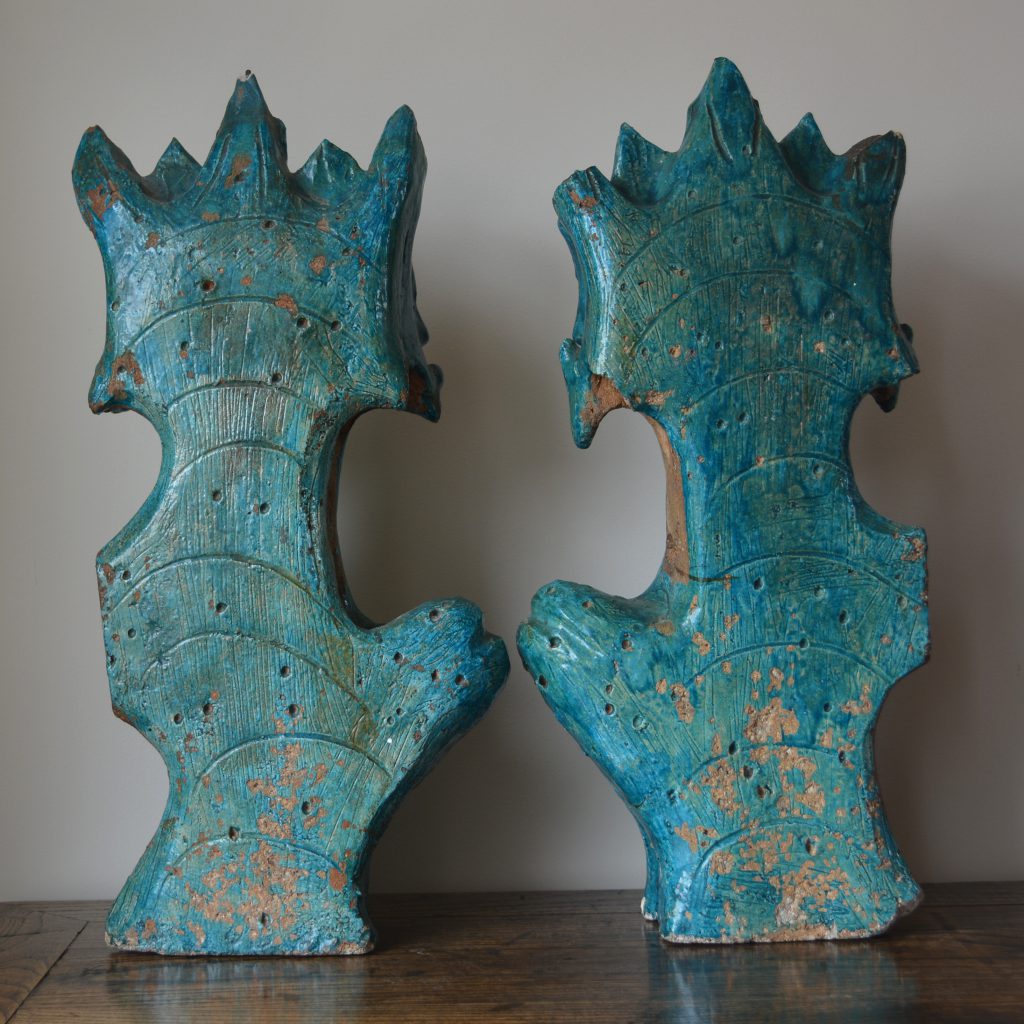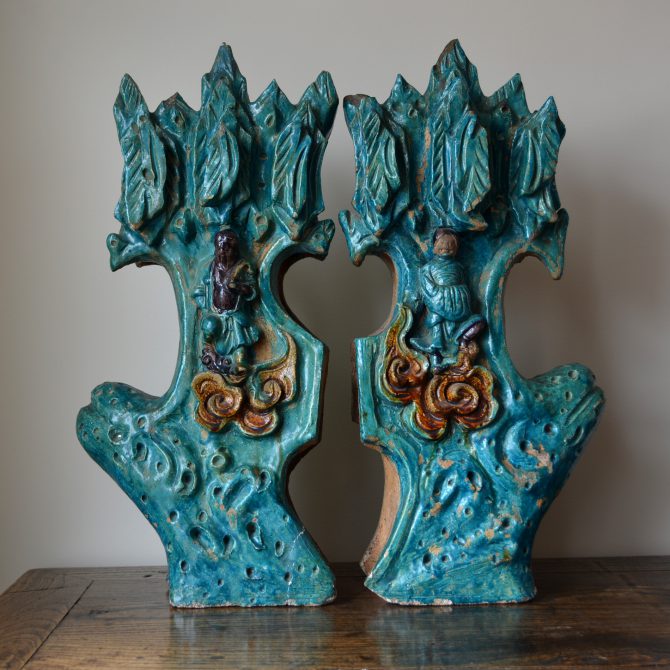
A Pair of Unusual Large Ming Pottery Architectural Fittings, 16th or 17th Century.
A pair of unusual large Ming pottery architectural roof fittings, Jiajing to Chongzhen c.1550-1640. Modelled as large jagged mountainous rocks, each with an Immortal standing on clouds. Possibly from Shanxi Province.
SOLD
- Condition
- One corner of the base re-stuck. The tops of the mountains are quite heavily chipped, one point has got the remains of an old repair. Some loss to the glaze.
- Size
- Height : 50 cm (19 3/4 inches)
- Provenance
- N/A
- Stock number
- 24656
Information
Ming Pottery Roof Tiles / Liuli Wa :
According to traditional Chinese belief, roofs are platforms of communication between the words of the living and spirit realms. Consequently they were decorated to ward off evil and to act as a magnet for blessings and good fortune. Marco Polo was struck by the visual effect of these brightly coloured tiles, remarking while describing Khubilai Khan`s palace at Dadu (modern day Beijing) The roof is all ablaze with scarlet and green and blue and yellow and all the colours that are, so brilliant varnished that it glitters like crystal and the sparkle of it can be seen from far away. The Chinese had made ceramic tiles from early times but it was the Ming dynasty that saw the largest period of production, much of this was based in Shanxi Province at small family run kilns that passed down from generation to generation. Glazed tile-work is known in China as Liuli Wa, literally `roof-tile of glass`, a term dating back to the Tang Dynasty (618-906) although Tang tiles are now very rare. The soft earthenware used to make Ming tiles varies but often is uneven in its constitution with lots of grog. The tiles were mould made with a large amount of hand working, giving a completely hand-made look with lots of sharp detail and undercutting. They were lead glaze and low fired which means the glaze often runs. There were two basic colour schemes used Sancai (greens,yellows and browns) and the darker palette of Fahau (turquoise, blue and purple). The dating of Chinese glazed tiles, which were made over a long period of time with little change, is difficult. Knowing when the building they came from was build doesn`t help as tiles, exposed to the elements, needed replacing from time to time and so a building might contain tiles made over several centuries. However an approximate chronology can be understood, and with the study tile construction replacements can be identified as being different to the genuine Ming examples.
A RELATED OBJECT : SOLD 23971.
A Very Rare Ming Porcelain Mountain Shaped Plant Holder, Late Ming Period, Late Wanli to Chongzhen c.1610-1640 (Probably Tianqi Period 1621-1627). This Ming Porcelain Vessel is Modelled on an Mountainous Eroded Stone Pillar with Rough Contours. There is Bamboo and Pine Growing Among the Crags, with a Bridge Suspended in the lower Park of the Mountain. A Thatched Hut with a Flag Can be Seen Sheltering Towards the Top. The Base has a `Cash` Shaped Pierced Aperture, there are Small Apertures Within the Mountain.
Zhangjiajie National Forest Park:
The dramatic rough craggy pinnacle of eroded stone such as those found in Zhangjiajie in Hunan Province. These extraordinary shaggy pillars of rock are now part of Zhangjiajie National Forest Park (the park covers 185 square miles and has been a UNESCO World Heritage Site since 1992). The small open niches clearly fore filled a purpose. As the vessel is hollow and the base, although covered is pierced, it seems likely the object was used to grow plants and presumably was kept on a tray. Such an object would be a perfect scholars object. Bringing scroll paintings of wild mountains inhabited be a few reclusive people to life as a three dimensional with a living element.
The Eight Immortals :
The Eight Immortals are a group of legendary Xian, immortals or transcendents in Chinese mythology. Each Immortals power can be transferred to a power tool that can give life or destroy evil. Together, these eight tools are called `Covert Eight Immortals`. Most of them are said to have been born in the Tang Dynasty or Song Dynasty. They are revered by the Taoists, and are also a popular element in the secular Chinese culture. They are said to live on Penglai Mountain-Island. The Immortals are : Immortal Woman He (He Xiangu), Royal Uncle Cao (Cao Guojiu), Iron-Crutch Li (Li Tieguai), Lan Caihe, Lü Dongbin,(leader) Philosopher Han Xiang (Han Xiang Zi), Elder Zhang Guo (Zhang Guo Lao), and Zhongli Quan.

